Texas Roadhouse, a new addition to Taipei’s restaurant scene, is a US-based chain known for grilled steaks and a hot-and-loud, western-themed, family-friendly ambience.
For now, the vibe of the Taipei outlet seems less country and more glamorous. On my visit, the floors were spotless and the tables stocked with two silver buckets — one filled with complimentary peanuts and the other empty for peanut shells, probably intended to discourage the Texas Roadhouse tradition of tossing shells on the floor. Diners were mainly couples in their 30s, and there were no parents with children in sight.
In other ways, though, the restaurant looks like a Texas Roadhouse from anywhere else. At the entrance there’s an illuminated deli case where steaks sit and age. Walk further in and there’s a long sports bar and a familiar expanse of rich brown booths, surrounded by glass and a view of downtown Taipei.
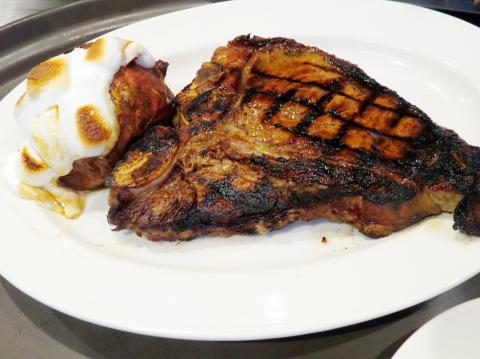
Photo: Enru Lin, Taipei Times
Texas Roadhouse focuses on USDA choice steak at a mid-market price point: There are several sirloins under NT$1,000, a 6oz filet at NT$850 and 10oz rib-eye at NT$960. The menu doesn’t have any entree options for vegetarians, though carnivores who don’t like steak can choose from a selection of barbecued ribs, crab cakes, fried fish and thw chicken burger. Servers in large numbers, all strikingly personable, rush about with a controlled ease. One brings complimentary bread to the table — sweet yeasty rolls baked in an oven you can see through a window — accompanied by a tub of slightly greasy but tasty cinnamon butter. Diners are also served unlimited roasted peanuts supplied from Hsinchu. The two can be a meal in themselves.
Orders arrive quickly and my steak, ordered medium, came rested and warm to the touch, with a lovely brown char and a faint pink center that ran with juice under the knife. You wouldn’t confuse it for Ruth’s Chris, but the quality was good for the price and had the characteristic flavorful fat-marbling of US beef.
All steaks come with two sides, and the options include sweet potato, various steamed vegetables, Texas red chili made from scratch, seasoned rice, baked potato and fries. Texas Roadhouse does a great sweet potato that’s packed with marshmallow and baked to a light mahogany crisp. The insides break open in a steamy puff and have an earthy yet creamy sweetness that is perfect with bacon or another salty, savory meat.
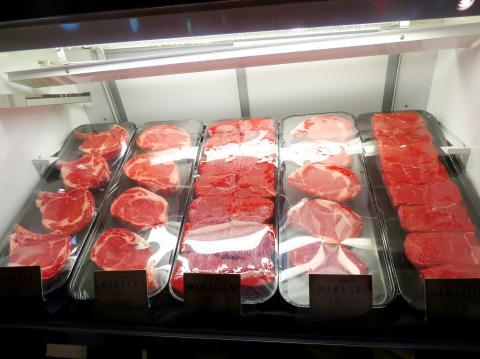
Photo: Enru Lin, Taipei Times
Desserts are similar to those of TGI Fridays (pie, brownies and ice cream), and like TGI Fridays, Texas Roadhouse has an extensive bar menu that ranges from margaritas and Sauvignon Blanc (from Chile, NT$220 a glass) to Taiwan PA (台 PA), a lemony India pale ale brewed locally and served from draft taps.
Currently, the staff is American from the Texas Roadhouse headquarters and there are Taiwanese trainees — all of whom line up together in the aisles and dance to music periodically. It should be fun for children, and maybe there will be some soon. For now, this is a good place for watching a soccer game and exchanging views with the bartender, or enjoying a steak dinner in an uptown musical atmosphere for less than NT$1,000.
This Taipei outlet is Texas Roadhouse’s first foray into East Asia. Founded in 1993, the steakhouse chain has over 430 restaurants in the US and hopes to establish eight to 10 outlets in Taiwan by 2019, before moving into the China market.
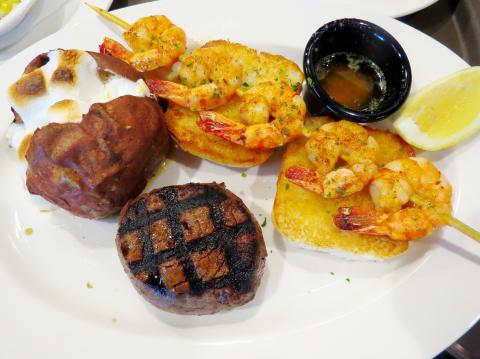
Photo: Enru Lin, Taipei Times
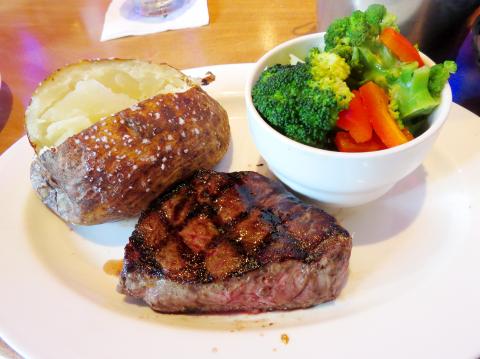
Photo: Enru Lin, Taipei Times
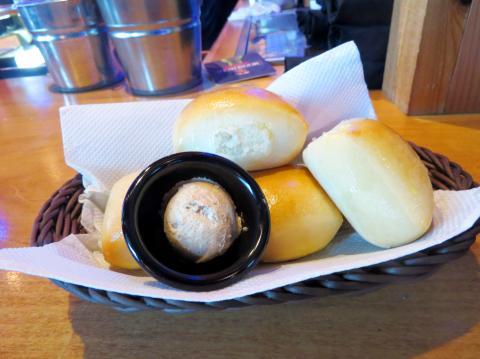
Photo: Enru Lin, Taipei Times

From the last quarter of 2001, research shows that real housing prices nearly tripled (before a 2012 law to enforce housing price registration, researchers tracked a few large real estate firms to estimate housing price behavior). Incomes have not kept pace, though this has not yet led to defaults. Instead, an increasing chunk of household income goes to mortgage payments. This suggests that even if incomes grow, the mortgage squeeze will still make voters feel like their paychecks won’t stretch to cover expenses. The housing price rises in the last two decades are now driving higher rents. The rental market
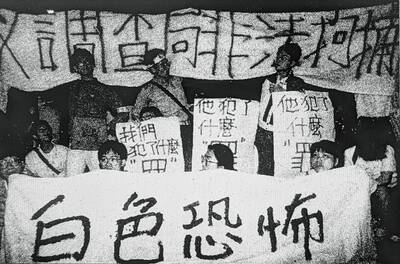
July 21 to July 27 If the “Taiwan Independence Association” (TIA) incident had happened four years earlier, it probably wouldn’t have caused much of an uproar. But the arrest of four young suspected independence activists in the early hours of May 9, 1991, sparked outrage, with many denouncing it as a return to the White Terror — a time when anyone could be detained for suspected seditious activity. Not only had martial law been lifted in 1987, just days earlier on May 1, the government had abolished the Temporary Provisions Effective During the Period of National Mobilization for Suppression of the Communist
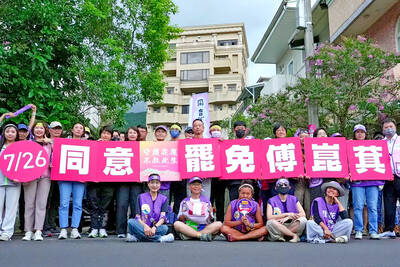
Hualien lawmaker Fu Kun-chi (傅?萁) is the prime target of the recall campaigns. They want to bring him and everything he represents crashing down. This is an existential test for Fu and a critical symbolic test for the campaigners. It is also a crucial test for both the Chinese Nationalist Party (KMT) and a personal one for party Chairman Eric Chu (朱立倫). Why is Fu such a lightning rod? LOCAL LORD At the dawn of the 2020s, Fu, running as an independent candidate, beat incumbent Democratic Progressive Party (DPP) lawmaker Hsiao Bi-khim (蕭美琴) and a KMT candidate to return to the legislature representing
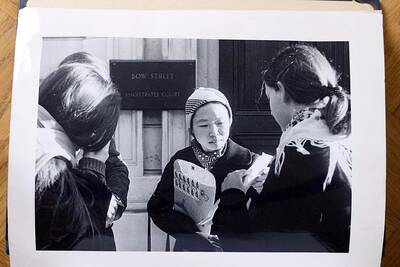
Fifty-five years ago, a .25-caliber Beretta fired in the revolving door of New York’s Plaza Hotel set Taiwan on an unexpected path to democracy. As Chinese military incursions intensify today, a new documentary, When the Spring Rain Falls (春雨424), revisits that 1970 assassination attempt on then-vice premier Chiang Ching-kuo (蔣經國). Director Sylvia Feng (馮賢賢) raises the question Taiwan faces under existential threat: “How do we safeguard our fragile democracy and precious freedom?” ASSASSINATION After its retreat to Taiwan in 1949, the Chinese Nationalist Party (KMT) regime under Chiang Kai-shek (蔣介石) imposed a ruthless military rule, crushing democratic aspirations and kidnapping dissidents from